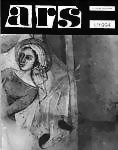
Journal ARS 27 (1994) 1
Ingrid CIULISOVÁ
Umenie, humanizmus a politika: Epigrafická výzdoba bardejovskej radnice[Art, Humanism and Politics: The Epigraphic Decoration of the Town Hall in Bardejov]
(Summary)
Early in the 16th century, the inhabitants of the weal thy and prosperous town Bardejov in Eastern Slovakia, built themselves a new town hall - a building holding an exceptional position in the history of Central-European renaissance architecture. The Bardejov town hall is the first secular building in the Transalpine countries with renaissance-architectural elements. That is to say, renaissance in its Central-European relationships, exclusively an art of the royal court and the nobility, for the first time became an art of the wealthy "burghers" precisely at the Bardejov town hall. The key to the question "Why precisely in Bardejov" lies in the character of the town's economy and the citizens' inclination to Reformational religious ideas. Bardejov's municipal treasury was principally filled with money from the production of linen and its sale. For many years the town Bardejov enjoyed a monopoly on bleaching, buying off and selling linen. In this sense its representatives managed an extensive production and trade enterprise which had the character of an early-capitalist manufacture, with wealthy merchants in the cloth trade at its head. These made up the urban patriciate. They owned large houses lining the square and returned the highest faxes to the town's treasury. As members of the town council and as founders of the parish church they decided Bardejov's life. Wealthy cloth merchants ruled the town both from the political and religious aspect. At the beginning of the 16th century they were adherents of the reforming religious ideas. A prominent propagator of the Reformation at Bardejov was one of Luther's admirers Wolfgang Schustel-Schustelius. In terms of Luther's ideas, Schustel called for reforms inside the Catholic Church.
He succeeded in gaining the confidence, favour and protection of Bardejov's wealthy citizens. But heretical ideals and attitudes at the beginning of a new age were also preached at Bardejov by humanist intellectuals, Jacob Piso and Valentine Eck. Jacob Piso came to Bardejov as tutor of the daughter of the protector, maecenas of the humanists, Alexis Thurzo. At that time he already was a well-known personality. He had close contacts with the papal court in Rome, with the great Dutch humanist Erasmus and the Thurzo family. The date of Piso's arrival to Bardejov is not known, but it certainly was before 1517 as after this date, he took up the post of tutor to the Hungarian ruler Louis II. His place at Bardejov was taken up by Valentine Eck. The activities of the two humanists at Bardejov left a concrete and still legible document, viz. a collection of seven Latin inscriptions at the town hall. The inscriptions revive the world of antiquity, admire its principles of social justice, civic liberty and private ownership. They propagate stoic moral tenets-ideas of Seneca and Cicero. The use of Latin inscriptions on public secular buildings in the first decade of the 16th century is a rarity in Transalpine countries. Ideas of ancient thinkers are here addressed for the first time to common townspeople. There is no mention in known archival materials as to who was the author of the ideational make-up of the epigraphic ornamentation of the Bardejov town hall. However, inferential evidence would point to Jacob Piso. He was familiar with Erasmus' Compendium of Latin Sentencia or maxims Adagiorum Opus. He knew the very first collection of sayings of the Roman classics, the book of Polydor Vergilius Proverbium Libellus. From the Roman humanist academies of Andrea Colloci and Johannes Coryci he was familiar with the thoughts of Roman stoics and Ciceronian ideas. Al, these facts throw a completely new light on past assessments of the architecture of the Bardejov town hall. The humanistic ideational environment of Bardejov and its product - the epigraphic decoration of the town hall - go to show that the renaissance at Bardejov was not merely a question of a mechanical transposition of court models. Of more importance than the court models were the new economic practices and the character of the professed religious ideas. These were the factors that caused renaissance at Bardejov to become, as it formerly had been in Italy, an art of a wealthy town patriciate.